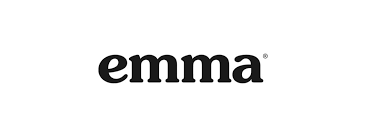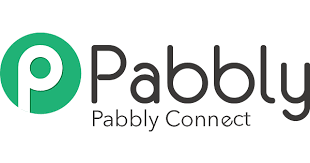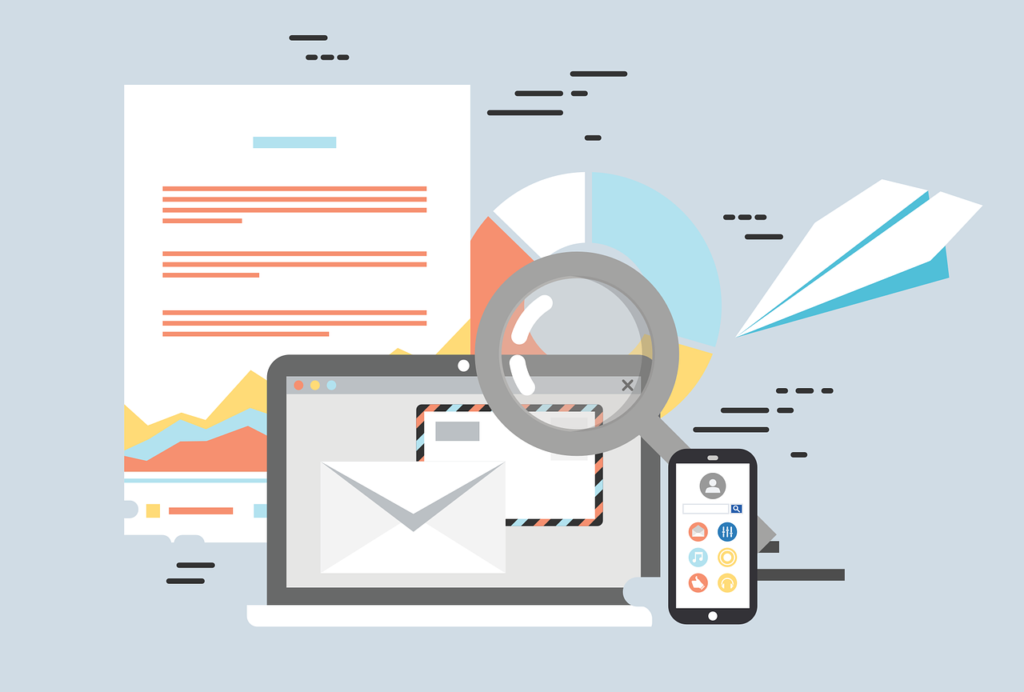Choosing the right email marketing tool is like picking the perfect pair of shoes for a marathon – it has to fit just right, offer good support, and be comfortable for the long run. In the world of email marketing, Emma and Pabbly Email Marketing are two such pairs of shoes, each with its unique features and comforts. But which one is the right fit for your marketing journey? Let’s start by comparing a crucial aspect of these platforms to help you make an informed decision.
| Emma Email Marketing Tool | Pabbly Email Marketing |
|---|---|
 |  |
| G2 Score – 4.0 out of 5 stars | G2 Score – 4.4 out of 5 stars |
| TrustRadius Score – 8.6/10 | TrustRadius Score – N/A |
User Interface and Ease of Use
Emma’s Intuitive Design vs Pabbly’s Comprehensive Approach
When it comes to email marketing tools, the ease of navigation and the user interface play a pivotal role in shaping your marketing experience. Let’s delve into the user-friendliness of Emma and Pabbly Email Marketing.
Emma: Simplicity Meets Sophistication
Emma is renowned for its sleek, intuitive user interface. It’s crafted for simplicity, making it an excellent choice for both beginners and seasoned marketers. The platform offers a clean and straightforward dashboard, guiding you smoothly through various functionalities with minimal fuss. This simplicity is a significant advantage for businesses that aim to get their email campaigns off the ground quickly and efficiently.
The email creation process in Emma is particularly user-friendly. It offers a seamless drag-and-drop experience, enabling you to design professional-looking emails with ease. The range of customizable templates further aids in crafting visually appealing emails that resonate with your brand, all without needing extensive design skills.
Additionally, Emma’s list management is straightforward, enabling efficient organization and segmentation of your email lists. This ease of managing contacts is a key factor in executing targeted and effective email campaigns.
Pabbly Email Marketing: Comprehensive Functionality
Pabbly Email Marketing, while offering a robust set of features, adopts a more comprehensive approach in its user interface. It’s geared towards users who appreciate depth in their email marketing tools. This approach might introduce a steeper learning curve, especially for those who prefer a more straightforward tool.
Despite its functional nature, Pabbly Email Marketing’s strength lies in its extensive features, including advanced automation capabilities, detailed segmentation, and a variety of integration options. Navigating these features might take some getting used to, but for users who value functionality over simplicity, the effort is well worth it.
Pabbly also offers a wide array of templates, but customizing these to fit your brand can be more complex than Emma’s straightforward editor. This aspect is something to consider for those who place high value on ease of use and quick setup.
Email Automation and Personalization
Emma’s Customized Campaigns vs Pabbly’s Versatile Automation
In the world of email marketing, the power of automation and personalization cannot be overstated. They are the engines that drive effective and engaging email campaigns. Let’s delve into how Emma and Pabbly Email Marketing fare in these critical areas.
Emma: Tailoring Your Message for Each Subscriber
Emma is particularly strong in offering personalized email experiences. The platform provides robust tools to tailor your messages based on subscriber data, ensuring that each email resonates with its intended audience. This level of personalization is key to creating engaging and relevant content.
The platform allows for detailed segmentation, enabling you to divide your audience based on various criteria, including demographics, behavior, and purchase history. This segmentation leads to more targeted campaigns, increasing the likelihood of your emails hitting the mark.
In addition, Emma’s automation capabilities streamline the process of sending out these personalized emails. You can set up automated workflows that trigger based on specific subscriber actions, like downloading a content piece or making a purchase. This ensures timely and relevant communication, enhancing the overall effectiveness of your email marketing strategy.
Pabbly Email Marketing: Flexibility in Automation
Pabbly Email Marketing stands out with its versatile automation features. The platform offers a range of automation options that cater to various email marketing needs, from simple autoresponders to complex, multi-step workflows.
Pabbly’s strength lies in its ability to automate the entire email lifecycle, from nurturing leads to converting them into customers. The platform provides tools to create detailed automation sequences based on subscriber behavior, helping you deliver the right message at the right time.
While Pabbly also offers personalization options, its primary focus is on the flexibility and depth of its automation capabilities. This makes it an excellent choice for businesses looking to automate their email marketing campaigns extensively, ensuring efficiency and consistency in their communications.
Pricing and Plans
Emma’s Customizable Solutions vs Pabbly’s All-In-One Model
In the diverse landscape of email marketing tools, pricing strategy plays a critical role in decision-making for businesses. Let’s compare the pricing models of Emma and Pabbly Email Marketing to see which platform offers better value based on your specific requirements.
Emma
- Pricing is typically tiered based on features and list size:
- Pro Plan: Offers automation, segmentation, and analytics. Pricing usually starts at around $89/month.
- Plus Plan: Includes additional features like landing pages and A/B testing. Pricing is higher and usually requires a quote from Emma.
- Enterprise Plan: Custom pricing for advanced needs like custom integrations and dedicated support.
Pabbly Email Marketing
- Rookie Plan: Starting at $29/month for up to 5,000 subscribers with unlimited emails.
- Pro Plan: Starting at $49/month for up to 15,000 subscribers.
- Advance Plan: Ranges from $99/month (for 50,000 subscribers) to $1,749/month (for 1,000,000 subscribers), offering advanced features and higher sending limits.
- All plans include SMTP routing, workflow automation, and multi-user access.
Emma: Flexible Pricing for Tailored Needs
Emma’s pricing model is designed with flexibility in mind, catering to a wide range of business sizes and requirements. The platform offers several pricing tiers, which are based on features and the size of your email list. This model allows businesses to choose a plan that aligns with their audience size and desired feature set.
One of the significant advantages of Emma’s pricing structure is its scalability. As your business grows and your needs evolve, you can upgrade your plan to accommodate more subscribers and access advanced features. This adaptability is particularly beneficial for growing businesses that anticipate an expansion in their email marketing activities.
Additionally, Emma offers customized pricing for larger businesses or agencies that require more extensive features and capabilities. This level of customization ensures that larger organizations can get a tailored solution that fits their specific needs.
Pabbly Email Marketing: All-Inclusive Approach at a Competitive Price
Pabbly Email Marketing takes a different approach with its all-inclusive pricing model. The platform offers a single plan that includes access to all its features, regardless of the size of your subscriber list. This simplicity in pricing is attractive for businesses looking for a straightforward, no-surprises approach to budgeting for their email marketing.
The all-in-one pricing model of Pabbly is not only simple but also competitively priced, making it an appealing option for small to medium-sized businesses. The platform provides access to advanced features like automation, segmentation, and integrations without the need for upgrades or additional fees.
This model is particularly advantageous for businesses that require a comprehensive set of features but have a limited budget. It ensures that users can leverage the full power of the platform without worrying about exceeding subscriber limits or needing to upgrade for additional functionalities.

Related: Check out our free SEO suite

Integration and Scalability
Emma’s Marketing Harmony vs Pabbly’s Diverse Ecosystem
In a landscape where digital marketing tools need to work in tandem, the capacity of an email marketing platform to integrate with other systems and scale with your business is crucial. Let’s compare the integration capabilities and scalability of Emma and Pabbly Email Marketing.
Emma: Seamless Integration for Marketing Synchronization
Emma is known for its seamless integration capabilities with a wide range of marketing tools and systems. This ability to effortlessly mesh with other platforms, like CRM systems, e-commerce solutions, and social media tools, is a significant advantage for ensuring a holistic marketing strategy.
These integrations allow for smooth data flow between Emma and other systems, ensuring that insights from one platform can inform and enhance the actions on another. This level of integration is vital for creating a unified marketing approach, where each tool complements the other, leading to more effective and efficient marketing campaigns.
In terms of scalability, Emma is designed to grow with your business. The platform can handle an increasing subscriber base and more complex marketing strategies, making it a suitable choice for businesses that anticipate growth and need a platform that can adapt to their evolving needs.
Pabbly Email Marketing: Broad Integration Capabilities for Extensive Functionality
Pabbly Email Marketing offers extensive integration options, making it a versatile platform for businesses that rely on a diverse set of tools and applications. The platform’s ability to integrate with various marketing, sales, and productivity tools enhances its functionality and usability.
Pabbly’s strength in integration lies in its ability to connect with a multitude of systems, from CRM and e-commerce platforms to payment gateways and social media channels. This wide range of integrations provides businesses with the flexibility to create a custom marketing tech stack that aligns with their specific needs and objectives.
Regarding scalability, Pabbly Email Marketing is also well-equipped to accommodate business growth. Its all-inclusive pricing model means that businesses can expand their subscriber base without worrying about exceeding limits or incurring additional costs. This scalability makes Pabbly an attractive option for growing businesses that need a platform capable of handling increased demand without additional financial burden.
Analytics and Reporting
Emma’s Insightful Metrics vs Pabbly’s Detailed Analysis
In the art of email marketing, the ability to analyze and understand campaign performance is invaluable. Analytics and reporting tools are the compass that guides future strategies and improvements. Let’s dive into how Emma and Pabbly Email Marketing handle analytics and reporting.
Emma: User-Friendly Analytics for Effective Strategy
Emma provides a suite of analytics tools that are both powerful and user-friendly. The platform offers essential metrics like open rates, click-through rates, and unsubscribe rates, which are fundamental for evaluating the success of your email campaigns.
What sets Emma apart is the way it presents these analytics in an easily digestible format. You don’t need to be a data scientist to understand what the numbers are telling you. Emma simplifies data analysis, making it easy for businesses of all sizes to gauge the effectiveness of their campaigns and make informed decisions.
Additionally, Emma’s A/B testing feature allows you to experiment with different elements of your emails, such as subject lines or content layouts. This feature is invaluable for honing your email marketing strategy to perfection based on what resonates best with your audience.
Pabbly Email Marketing: Comprehensive Analytics for In-Depth Insights
Pabbly Email Marketing offers a more detailed approach to analytics and reporting. The platform caters to businesses that need deep insights into their email marketing campaigns. Pabbly provides extensive data on campaign performance, including advanced metrics that go beyond the basics.
With Pabbly, you can dive into the specifics of your campaigns, understanding subscriber behavior and interaction at a granular level. This detailed analysis is crucial for businesses that base their strategies on data-driven insights and want to maximize the effectiveness of their email marketing efforts.
Pabbly also features advanced segmentation in its reporting, allowing you to analyze how different segments of your audience respond to your campaigns. This level of detail can be instrumental in crafting highly targeted and effective marketing strategies.
Conclusion
In conclusion, when deciding between Emma Email Marketing Tool and Pabbly Email Marketing, the choice ultimately hinges on your specific business needs, marketing goals, and the level of detail and control you desire in your campaigns.
Emma stands out for its user-friendly interface, straightforward analytics, and powerful personalization capabilities. It’s an excellent choice for businesses seeking an intuitive and efficient platform that makes email marketing both simple and effective. Emma’s ease of use, coupled with its ability to create personalized and engaging email content, makes it ideal for those who want to connect with their audience without delving into overly complex analytics.
Pabbly Email Marketing, with its all-inclusive pricing model and detailed analytics, is well-suited for businesses looking for a comprehensive email marketing solution. Its strength lies in its in-depth data analysis and extensive range of features, making it a potent tool for businesses that prioritize data-driven decision-making and require a high degree of automation and customization in their email marketing efforts.
Read Next:
- The Importance of Mobile-Responsive Design in Email Marketing
- Personalization in Email Marketing: Crafting Tailored Messages for Your Audience
- Email Marketing for Online Courses: Boosting Enrollments and Engagement
- The Science Behind Effective Email Marketing: What Drives Opens and Clicks?
- Emma Email Marketing Tool vs Zoho Campaigns: The Best Email Marketing Tool for You






















Comments are closed.